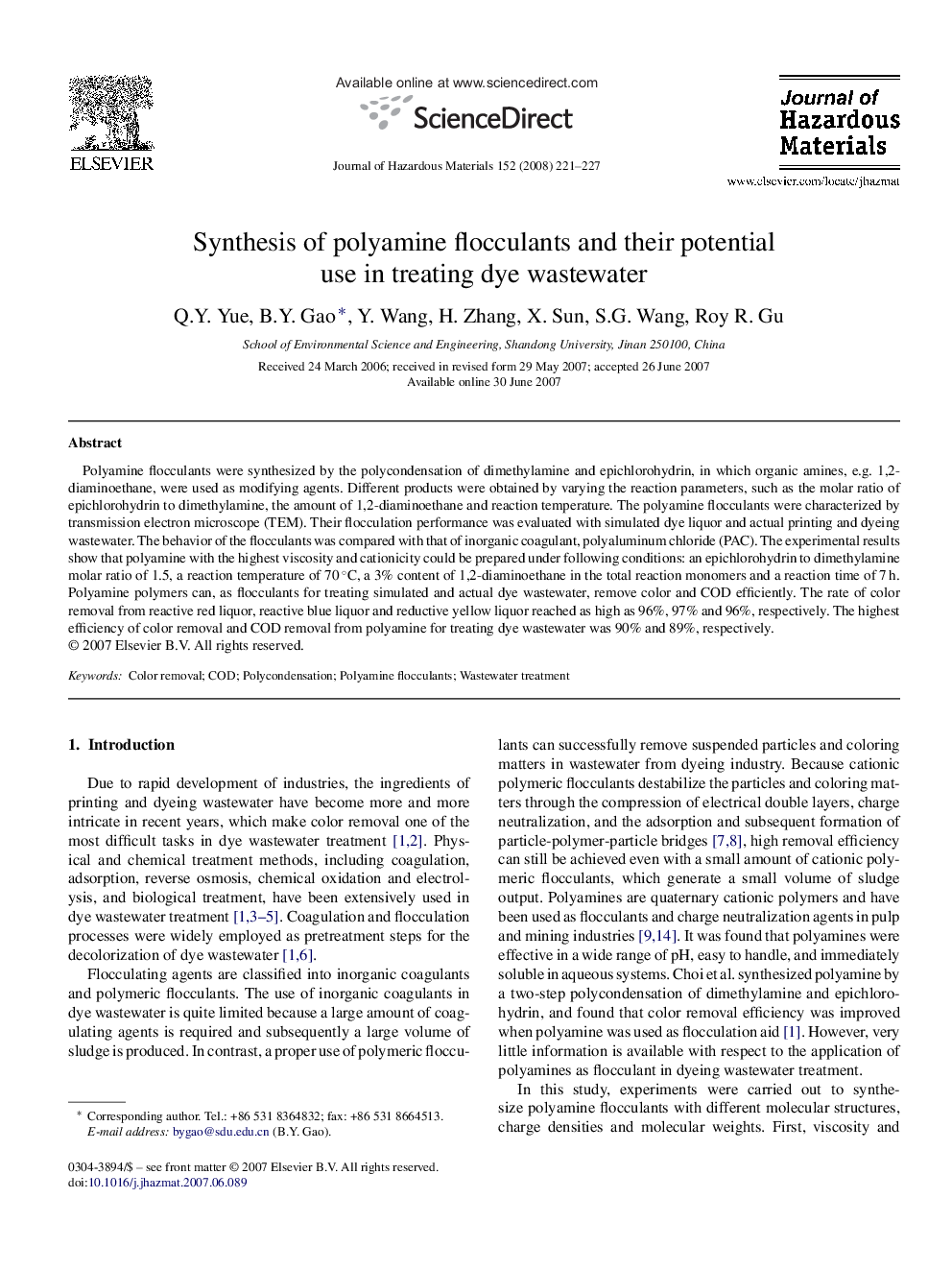| Article ID | Journal | Published Year | Pages | File Type |
|---|---|---|---|---|
| 583795 | Journal of Hazardous Materials | 2008 | 7 Pages |
Abstract
Polyamine flocculants were synthesized by the polycondensation of dimethylamine and epichlorohydrin, in which organic amines, e.g. 1,2-diaminoethane, were used as modifying agents. Different products were obtained by varying the reaction parameters, such as the molar ratio of epichlorohydrin to dimethylamine, the amount of 1,2-diaminoethane and reaction temperature. The polyamine flocculants were characterized by transmission electron microscope (TEM). Their flocculation performance was evaluated with simulated dye liquor and actual printing and dyeing wastewater. The behavior of the flocculants was compared with that of inorganic coagulant, polyaluminum chloride (PAC). The experimental results show that polyamine with the highest viscosity and cationicity could be prepared under following conditions: an epichlorohydrin to dimethylamine molar ratio of 1.5, a reaction temperature of 70 °C, a 3% content of 1,2-diaminoethane in the total reaction monomers and a reaction time of 7 h. Polyamine polymers can, as flocculants for treating simulated and actual dye wastewater, remove color and COD efficiently. The rate of color removal from reactive red liquor, reactive blue liquor and reductive yellow liquor reached as high as 96%, 97% and 96%, respectively. The highest efficiency of color removal and COD removal from polyamine for treating dye wastewater was 90% and 89%, respectively.
Related Topics
Physical Sciences and Engineering
Chemical Engineering
Chemical Health and Safety
Authors
Q.Y. Yue, B.Y. Gao, Y. Wang, H. Zhang, X. Sun, S.G. Wang, Roy R. Gu,
